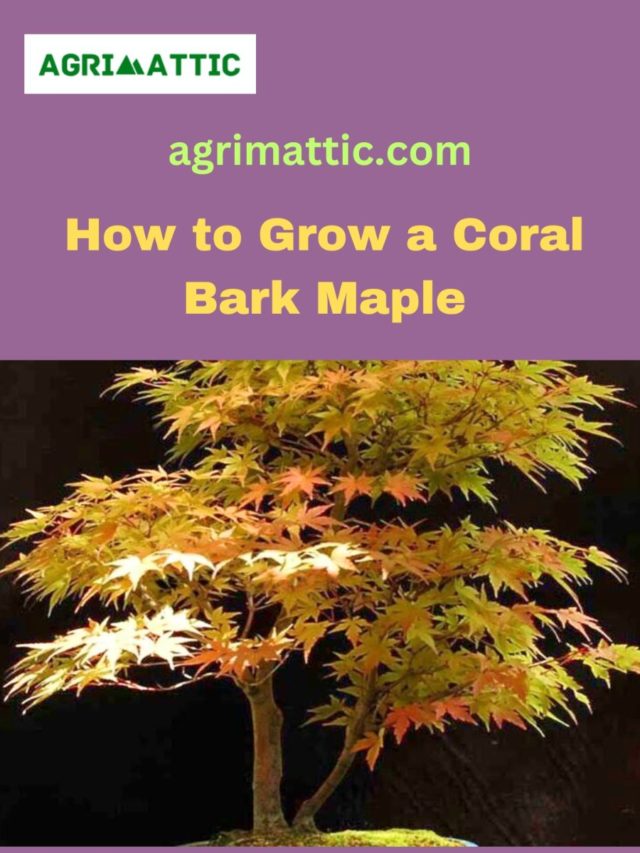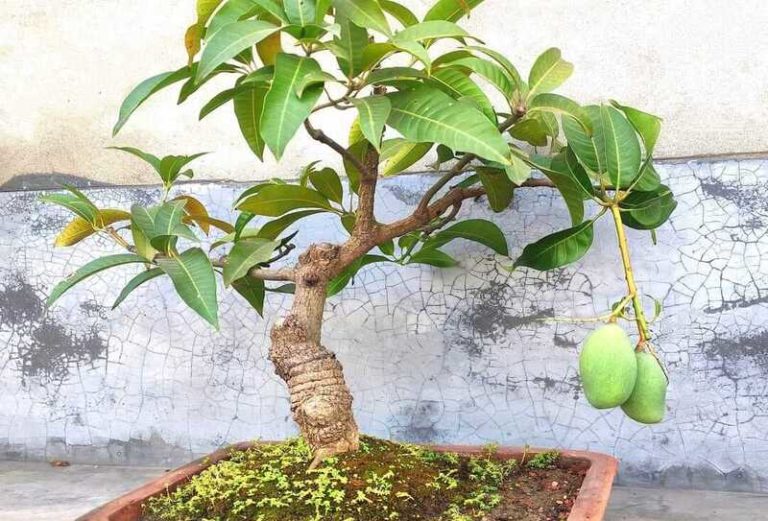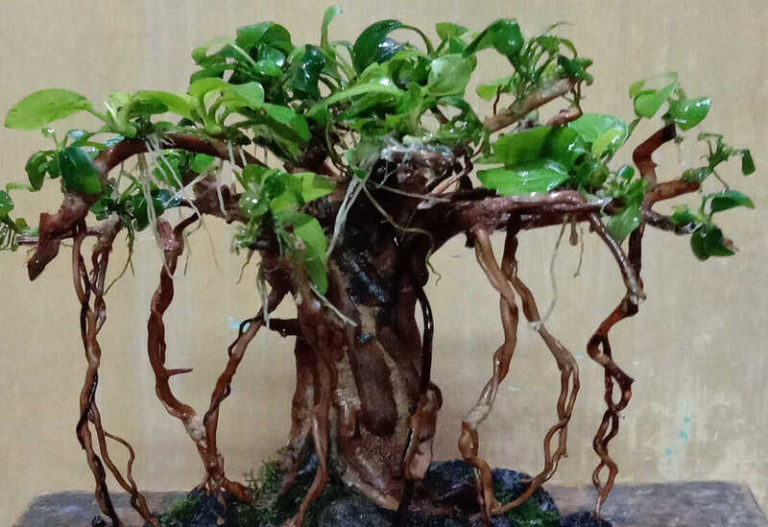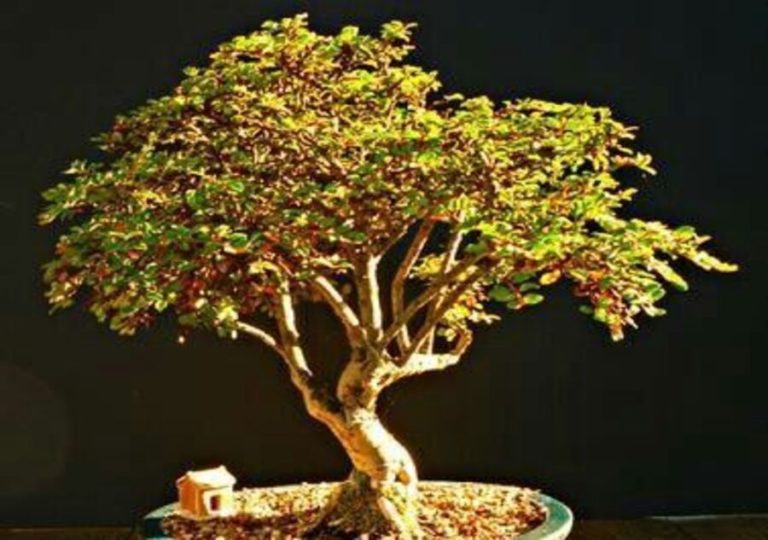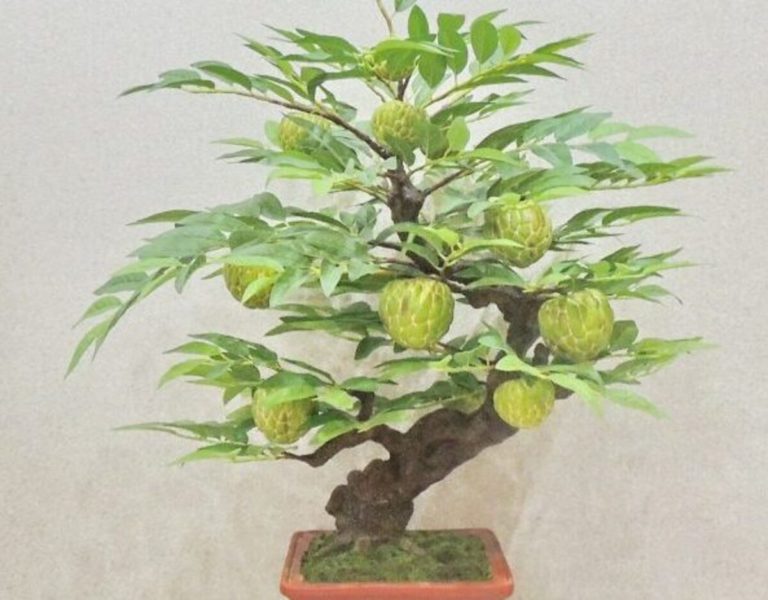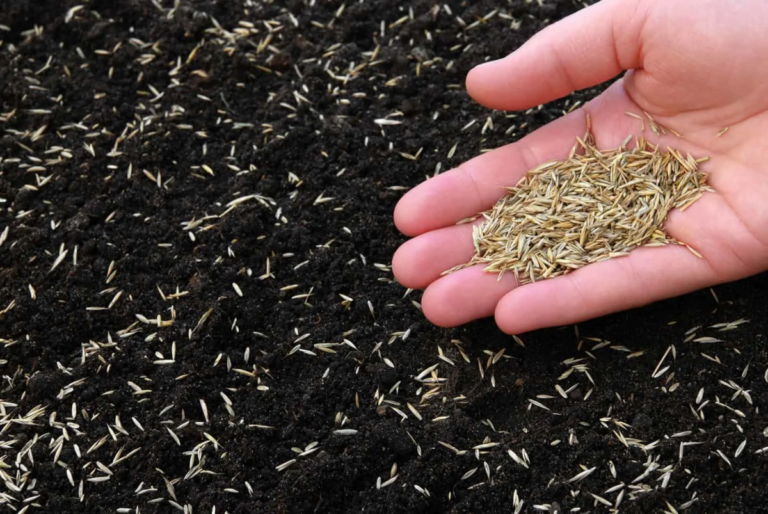Coral Bark Maple: A Delightful Tree with Striking Red Bark
Bonsai, a miniature tree art form from Japan, has captured the fascination of people worldwide. Among the various bonsai varieties, the coral bark maple bonsai (scientifically known as Acer palmatum ‘Sango kaku’) stands out for its stunning appearance. In this article, we will explore the enchanting world of coral bark maple bonsai and learn how to care for these captivating trees.
What is a Coral Bark Maple?
The Coral Bark Maple (Acer palmatum ‘Sango kaku’) is a type of maple tree known for its coral-red bark. Native to Japan, it is a deciduous tree with delicate palmate leaves. During the winter, its bark becomes vibrant and showcases shades of coral, red, and orange. This unique feature makes it a popular choice for bonsai cultivation and as an ornamental tree in gardens. The Coral Bark Maple’s striking appearance and beautiful foliage add charm and elegance to any landscape or bonsai collection.
| Attribute | Information |
| Botanical Name | Acer palmatum ‘Sango Kaku’ |
| Other Name | Coral Bark Maple, Japanese Maple |
| Native Area | Japan, Korea |
| Plant Type | Deciduous tree |
| Mature Height | 15-25 feet |
| Mature Width | 10-15 feet |
| Growth Rate | Moderate |
| Fertilizer | Balanced, slow-release fertilizer |
| Light Requirement | Full sun to partial shade |
| Propagation | Seeds, cuttings, grafting |
| Soil Type | Well-drained, slightly acidic soil |
| Temperature | Hardy in USDA Zones 5-8 |
| Toxicity | Generally non-toxic |
| Watering | Keep roots consistently moist |
| USDA Zones | 5-8 |

History and Origins of the Coral Bark Maple
The history and origins of the Coral Bark Maple, scientifically known as Acer palmatum ‘Sango kaku,’ can be traced back to Japan. The Japanese Maple, of which the Coral Bark Maple is a variety, has a long-standing cultural significance in Japan and is deeply rooted in Japanese gardening traditions.
The Acer palmatum species, to which the Coral Bark Maple belongs, is native to Japan, China, and Korea. These maples have been cultivated in Japan for centuries, with the earliest records dating back to the 17th century. Japanese gardeners and horticulturists have been highly skilled in selecting and propagating various cultivars of Acer palmatum, including the Coral Bark Maple.
The specific cultivar ‘Sango kaku,’ which translates to “coral tower” or “coral pillar” in Japanese, was first discovered in the late 19th century in a Japanese garden. Its distinctive coral-red bark made it a standout variety among other maples. The exact origin and discovery details of ‘Sango kaku’ are not widely documented, but it gained popularity for its unique and eye-catching bark color.
Over time, the Coral Bark Maple has become cherished not only in Japan but also internationally. Its beauty and ornamental value have made it a sought-after tree in gardens, parks, and bonsai collections worldwide. The tree’s aesthetic appeal, particularly during the winter months when its vibrant coral-red bark stands out, has contributed to its popularity as a beloved ornamental tree and a desirable choice for bonsai enthusiasts.
Today, the Coral Bark Maple continues to captivate gardeners, landscape designers, and bonsai enthusiasts with its striking appearance and elegant presence. Its rich history, cultural significance, and remarkable beauty make it a treasured tree that adds charm and allure to various settings around the world.
Coral Bark Maple and Their Symbolism
The Coral Bark Maple, known scientifically as Acer palmatum ‘Sango kaku,’ carries symbolic meaning in various cultural contexts. While specific symbolism may vary, the following are some common interpretations associated with the Coral Bark Maple:
Beauty and Elegance: The Coral Bark Maple is often admired for its aesthetic appeal. Its vibrant coral-red bark and delicate foliage symbolize beauty, grace, and elegance. As an ornamental tree, it adds a touch of refinement and visual charm to landscapes, gardens, and bonsai collections.
Resilience and Strength: The Coral Bark Maple’s ability to thrive in different climates, including colder regions, is seen as a symbol of resilience and strength. Its capacity to endure harsh winters and still exhibit its striking bark color represents the ability to overcome challenges and stand tall in the face of adversity.
Change and Transformation: The Coral Bark Maple’s seasonal transformations, particularly the vibrant colors of its leaves in autumn, are often associated with the cycles of change and transformation. The changing foliage represents the impermanence of life and the importance of embracing and accepting change.
Harmony and Balance: Like other types of maple, the Coral Bark Maple is seen as a sign of unity and balance in Japanese society. Its tiny leaves are grouped in a palm-like shape that makes you feel calm and at peace. People think that the tree brings a sense of peace and calm to the area around it.
Natural Beauty and Appreciation: The Coral Bark Maple embodies the appreciation and admiration of nature’s beauty. Its striking bark color and graceful form remind us to pause, observe, and appreciate the wonders of the natural world. It serves as a reminder to find joy and inspiration in the simple and exquisite aspects of life.
It’s important to note that symbolism can vary across cultures and individuals. While the Coral Bark Maple may hold specific meanings in certain contexts, personal interpretations and associations can also be deeply meaningful. Ultimately, the symbolism of the Coral Bark Maple can be a personal and subjective experience, adding to its allure and significance for those who appreciate its beauty.
Characteristics of the Coral Bark Maple
The Coral Bark Maple, scientifically known as Acer palmatum ‘Sango kaku,’ possesses several distinctive characteristics that contribute to its charm and desirability. Here are some key features of the Coral Bark Maple:
1. Bark Color: One of the most striking features of the Coral Bark Maple is its coral-red bark. The color intensifies during the winter months, making it stand out among other trees. This unique attribute gives the tree its name and adds a vibrant splash of color to the landscape.
2. Deciduous Tree: The Coral Bark Maple is a deciduous tree, meaning it sheds its leaves in the fall. This characteristic allows for beautiful seasonal displays as the leaves change color before falling. The tree’s bare branches in winter showcase the captivating coral-red bark.
3. Palmate Leaves: The leaves of the Coral Bark Maple are palmate, which means they have multiple lobes resembling the shape of a hand with spread-out fingers. The leaves are typically five to seven lobed, though variations can occur among different cultivars. They emerge in spring as bright green and change to shades of yellow, orange, and red in the fall, providing stunning foliage displays.
4. Medium-sized Tree: The Coral Bark Maple generally grows as a medium-sized tree, reaching a height of around 15 to 25 feet (4.5 to 7.6 meters) and a spread of about 15 to 20 feet (4.5 to 6 meters) at maturity. Its size makes it suitable for various landscape settings, gardens, and even container planting for bonsai cultivation.
5. Tolerant of Cold Climates: The Coral Bark Maple is known for its tolerance to cold climates, including regions with freezing temperatures. This adaptability allows it to thrive in a range of environments, making it a sought-after choice for gardeners in colder regions.
6. Slow to Moderate Growth: The Coral Bark Maple has a relatively slow to moderate growth rate. This characteristic, coupled with its medium size, makes it manageable for pruning and maintaining its shape as a bonsai specimen or as a landscape tree.
7. Low Canopy: The Coral Bark Maple has a low canopy with branches that tend to arch gracefully. This canopy structure enhances its aesthetic appeal and allows for interesting branching patterns to be displayed in bonsai cultivation.
These characteristics collectively contribute to the allure and desirability of the Coral Bark Maple. Its stunning bark color, attractive foliage, adaptability to cold climates, and manageable size make it a beloved choice for both landscape and bonsai enthusiasts.
Types of Coral Bark Maple
There are several cultivars or types of Coral Bark Maple (Acer palmatum ‘Sango kaku’) that offer slight variations in leaf color, growth habit, and overall appearance. Here are a few popular cultivars:
Acer palmatum ‘Sango kaku’: This is the standard cultivar of Coral Bark Maple and is widely recognized for its vibrant coral-red bark. It features delicate, palmate leaves that emerge green in spring, turning to shades of yellow, orange, and red in the fall.
Acer palmatum ‘Beni kawa’: This cultivar is similar to the standard Coral Bark Maple but has a slightly different bark color. ‘Beni kawa’ displays a more intense red or reddish-orange bark throughout the year, making it particularly eye-catching.
Acer palmatum ‘Aka kawa’: This cultivar is known for its distinctively deep red or reddish-brown bark. ‘Aka kawa’ translates to “red bark” in Japanese, and its bark color remains striking throughout the year. The foliage displays the typical range of colors, transitioning from green in spring to vibrant hues of orange and red in autumn.
Acer palmatum ‘Senkaki’: Also referred to as ‘Sango kaku’ or ‘Sango otome,’ this cultivar is prized for its bright red bark, similar to the standard Coral Bark Maple. However, ‘Senkaki’ tends to have brighter and more intense red bark, making it highly sought after. The leaves are delicate and green in spring, turning to golden-yellow in the fall.
These are just a few examples of the Coral Bark Maple cultivars available. Each cultivar maintains the captivating coral-red bark characteristic, while offering subtle variations in color or growth patterns. Selecting a particular cultivar can help create diverse visual displays or cater to specific preferences when incorporating the Coral Bark Maple into gardens, landscapes, or bonsai collections.
How to Grow a Coral Bark Maple
Growing a Coral Bark Maple (Acer palmatum ‘Sango kaku’) requires attention to proper planting, care, and maintenance. Here are some essential steps to help you successfully grow a Coral Bark Maple:
- Selecting the Plant: Choose a healthy Coral Bark Maple sapling from a reputable nursery or garden center. Look for a well-developed root system and healthy foliage. Consider the size and shape of the tree, ensuring it suits your available space and desired aesthetic.
- Planting Location: Coral Bark Maples thrive in partial shade to full sun conditions. Select a location that receives morning sun and afternoon shade, or dappled sunlight throughout the day. The soil should be well-draining and rich in organic matter.
- Digging the Hole: Dig a hole that is wide and slightly shallower than the root ball of the sapling. Gently loosen the soil in the hole to allow for root growth.
- Planting the Tree: Place the Coral Bark Maple sapling in the hole, ensuring it is at the same level as it was in the container or nursery. Backfill the hole with the loosened soil, firming it gently around the roots. Water the tree thoroughly to settle the soil.
- Watering: Keep the soil consistently moist but not waterlogged. Water deeply, allowing the water to penetrate the root zone. Avoid letting the soil dry out completely between watering, especially during hot and dry periods.
- Mulching: Put a layer of organic soil around the tree’s base. This could be wood chips or chopped bark. Mulching helps keep the soil wet, keeps the soil at the right temperature, and keeps weeds from growing. Keep the mulch away from the tree’s root to avoid problems with wetness.
- Pruning: Prune the Coral Bark Maple during the dormant season (late winter or early spring) to remove dead, damaged, or crossing branches. Regular pruning helps maintain the tree’s shape and promotes better air circulation and sunlight penetration.
- Fertilizing: Apply a balanced, slow-release fertilizer in early spring to provide essential nutrients for healthy growth. Follow the manufacturer’s instructions regarding application rates and frequency.
- Protection from Extreme Conditions: Provide protection from extreme weather conditions. In colder regions, protect the tree from freezing temperatures by mulching around the base and wrapping the trunk with burlap or other protective materials. In hotter climates, ensure the tree is adequately watered and provide afternoon shade to prevent leaf scorch.
- Monitoring and Care: Regularly monitor the Coral Bark Maple for signs of pests, diseases, or nutrient deficiencies. Address any issues promptly to prevent further damage. Additionally, conduct regular checks for proper watering, soil moisture, and overall tree health.
By following these steps and providing proper care, you can enjoy the beauty and vibrant coral-red bark of your Coral Bark Maple as it matures and becomes a focal point in your garden or landscape.
Benefits of the Coral Bark Maple
The Coral Bark Maple (Acer palmatum ‘Sango kaku’) offers numerous benefits that make it a popular choice for gardens, landscapes, and bonsai collections. Here are some key benefits of the Coral Bark Maple:
1. Ornamental Beauty: The Coral Bark Maple stands out because of its beautiful coral-red bark. The bright color draws attention and adds visual interest to any setting, especially in the winter when most other trees are dead. The fine leaves of the tree, which turn yellow, orange, and red in the fall, add to its aesthetic value.
2. Versatility: The Coral Bark Maple can be grown as a full-sized tree in gardens or as a bonsai specimen. Its medium size and manageable growth rate make it suitable for various landscape settings, including small yards, urban gardens, and containers for bonsai cultivation. Its versatility allows it to be incorporated into different design styles, from traditional Japanese gardens to modern landscapes.
3. Cold Hardiness: Coral Bark Maples are known for their tolerance to cold climates. They can withstand freezing temperatures and are suitable for planting in regions with harsh winters. This adaptability makes them a preferred choice for gardeners in cooler climates who want to enjoy the beauty of a colorful tree even during the winter season.
4. Bonsai Potential: The Coral Bark Maple is highly valued in the art of bonsai cultivation. Its striking bark color, delicate foliage, and graceful form make it an ideal candidate for shaping into a miniature tree. Bonsai enthusiasts appreciate the Coral Bark Maple for its aesthetic appeal and the ability to create captivating bonsai specimens.
5. Shade and Structure: The Coral Bark Maple provides shade and structure to landscapes. When planted strategically, it can offer relief from direct sunlight during hot summer months, creating a more comfortable outdoor environment. The tree’s low canopy and arching branches add architectural interest and create a sense of enclosure in gardens or along pathways.
6. Environmental Benefits: Like other maple trees, the Coral Bark Maple contributes to the environment by providing shade, reducing heat island effect, and improving air quality. Trees absorb carbon dioxide, release oxygen, and act as natural air filters, reducing pollutants and improving overall air quality in their vicinity.
7. Wildlife Habitat: The Coral Bark Maple attracts wildlife, including birds and butterflies, which seek shelter and food from its branches and foliage. It supports biodiversity and creates a habitat for various beneficial insects and pollinators, contributing to the overall ecological balance.
The Coral Bark Maple’s exceptional beauty, adaptability to various climates, and multiple applications as an ornamental tree or bonsai make it a sought-after choice for gardeners, landscape designers, and bonsai enthusiasts. Its benefits extend beyond aesthetics, encompassing environmental contributions and the creation of a welcoming habitat for wildlife.
Styling and Design of a Coral Bark Maple
When it comes to styling and designing a Coral Bark Maple (Acer palmatum ‘Sango kaku’), there are several approaches you can take to showcase its unique characteristics and create an aesthetically pleasing display. Here are some ideas for styling and design:
Standalone Specimen Tree: Allow the Coral Bark Maple to take center stage as a standalone specimen tree in your garden or landscape. Select a prominent location where its vibrant coral-red bark and graceful form can be admired from different angles. Ensure there is ample space for the tree to grow to its full size and for its canopy to spread. This approach highlights the tree’s natural beauty and creates a focal point in the landscape.
Group Planting: Create an eye-catching display by planting multiple Coral Bark Maples together in a group. Select an odd number of trees (e.g., three or five) and arrange them in a triangular or irregular pattern. This grouping enhances the visual impact of the coral-red bark and creates a cohesive and harmonious design. Ensure adequate spacing between the trees to allow for healthy growth and proper airflow.
Bonsai Cultivation: The Coral Bark Maple is highly suitable for bonsai cultivation due to its attractive bark color and delicate foliage. Consider shaping it into a bonsai specimen to showcase its unique characteristics on a smaller scale. Work with a skilled bonsai practitioner or learn the art of bonsai yourself to create a miniature tree with carefully pruned branches, refined trunk movement, and an artistic pot or container.
Contrast and Complement with Foliage: Pair the vibrant coral-red bark of the Coral Bark Maple with contrasting or complementary foliage plants. Choose plants with foliage in shades of green, blue, or variegated patterns to create visual interest and enhance the overall design. The contrasting colors will make the Coral Bark Maple’s bark stand out even more, while the varied foliage textures add depth and dimension to the composition.
Incorporate Hardscape Elements: Use hardscape elements such as rocks, pathways, or garden structures to complement the Coral Bark Maple. Create a tranquil garden setting by placing the tree near a winding path or incorporating it into a Japanese-inspired garden design. The clean lines and organic shapes of hardscape elements can provide a pleasing contrast to the tree’s organic form and highlight its beauty.
Lighting Effects: Illuminate the Coral Bark Maple to create stunning nighttime effects. Install landscape lighting fixtures strategically to showcase the tree’s silhouette, enhance the color of its bark, or cast interesting shadows on surrounding surfaces. Lighting can extend the enjoyment of the tree’s beauty beyond daylight hours and create a magical ambiance in the garden.
Remember to consider the overall theme, style, and size of your garden or landscape when incorporating the Coral Bark Maple. Pay attention to proper spacing, soil preparation, and ongoing care to ensure the tree thrives and continues to showcase its unique styling and design features for years to come.
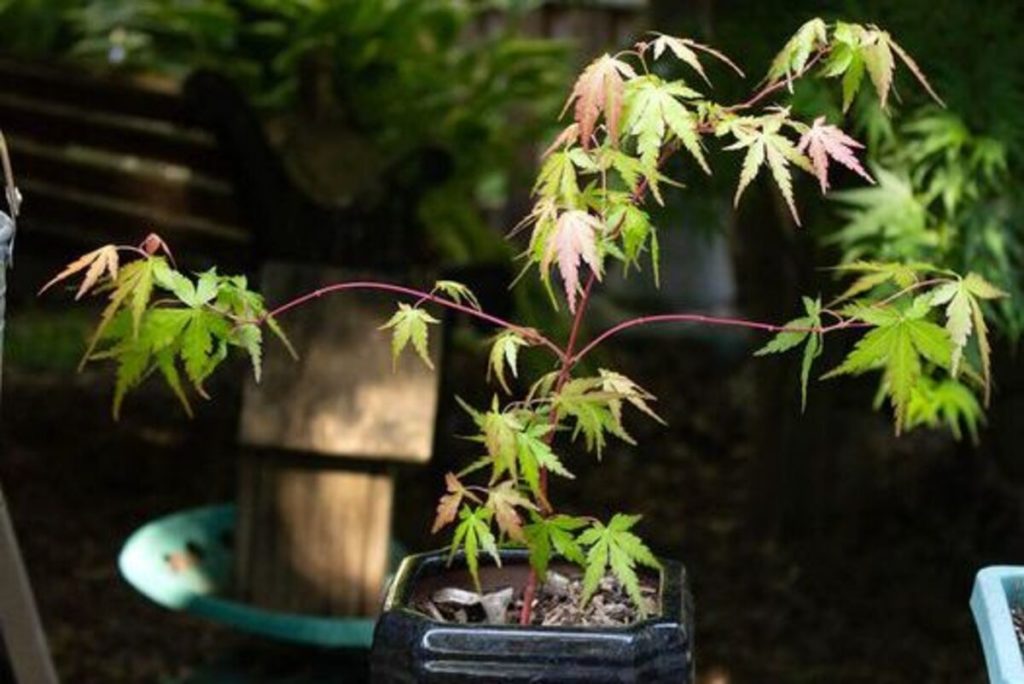
How to Care for and Maintain a Coral Bark Maple
Caring for and maintaining a Coral Bark Maple (Acer palmatum ‘Sango kaku’) is essential to ensure its health, vitality, and aesthetic appeal. Here are some important care tips to keep in mind:
- Watering: Provide regular and consistent watering, especially during the tree’s establishment period. Keep the soil evenly moist but not waterlogged. In hotter and drier climates, you may need to water more frequently. Mulching around the base of the tree helps retain soil moisture.
- Soil and Fertilizer: Plant the Coral Bark Maple in well-draining soil that is rich in organic matter. Regularly fertilize the tree during the growing season with a balanced, slow-release fertilizer formulated for ornamental trees. Follow the manufacturer’s instructions regarding application rates and frequency.
- Pruning: Prune the Coral Bark Maple during the dormant season (late winter or early spring) to remove dead, damaged, or crossing branches. This helps improve airflow, maintain the desired shape, and promote overall tree health. Avoid heavy pruning, as it can stimulate excessive new growth and diminish the tree’s natural form.
- Protection from Extreme Conditions: Provide protection from extreme weather conditions. In colder regions, protect the tree from freezing temperatures by mulching around the base and wrapping the trunk with burlap or other protective materials. In hotter climates, ensure the tree is adequately watered and provide afternoon shade to prevent leaf scorch.
- Pest and Disease Control: Monitor the Coral Bark Maple for common pests such as aphids, scale insects, and spider mites. Regularly inspect the tree for signs of pest infestation, such as distorted leaves or sticky residue. Treat infestations promptly using appropriate organic or chemical insecticides. Additionally, watch for signs of fungal diseases like powdery mildew or leaf spot, and address them with appropriate fungicides if necessary.
- Mulching and Weed Control: Put a layer of organic soil around the tree’s base. This could be wood chips or chopped bark. Mulching helps keep the soil wet, keeps the soil at the right temperature, and keeps weeds from growing. Keep the area around the tree’s trunk free of mulch to avoid problems with moisture and stop mice or other bugs from nesting there.
- Regular Inspection: Regularly inspect the Coral Bark Maple for any signs of stress, disease, or nutrient deficiencies. Look for discolored leaves, unusual growth patterns, or any physical damage. Address any issues promptly to prevent further damage and maintain the tree’s overall health.
- Seasonal Care: In autumn, enjoy the spectacular display of foliage colors as the leaves change. Remove fallen leaves and debris from around the tree to prevent the spread of diseases. During winter, monitor the tree for any ice or snow buildup on the branches and gently brush it off to prevent breakage.
By following these care guidelines, you can ensure the vitality and beauty of your Coral Bark Maple. Regular attention and proper maintenance will allow the tree to thrive and provide years of enjoyment in your garden or landscape.
Coral Bark Maple Care Sheet
| Aspect | Care Tips |
| Watering | Keep the soil evenly moist, but avoid waterlogging. |
| Water deeply and thoroughly, especially during hot and dry periods. | |
| Sunlight | Plant in a location with partial shade to full sun, preferably with morning sun and afternoon shade. |
| Temperature | Hardy in USDA zones 5-8. Protect from extreme cold or hot temperatures. |
| Humidity | Coral Bark Maples tolerate average humidity levels. |
| Fertilization | Apply a balanced, slow-release fertilizer in early spring. |
| Follow the manufacturer’s instructions for application rates and frequency. | |
| Pruning and Trimming | Prune during the dormant season (late winter or early spring). |
| Remove dead, damaged, or crossing branches. | |
| Wiring and Styling | Coral Bark Maples can be wired and styled for bonsai purposes. Seek guidance from a bonsai practitioner. |
| Repotting | Repot every 2-3 years in early spring before new growth begins. |
| Use well-draining bonsai soil and trim back some roots during repotting. | |
| Pest and Disease Control | Regularly inspect for pests like aphids, scale insects, and spider mites. |
| Address infestations promptly using appropriate insecticides. | |
| Watch for fungal diseases like powdery mildew or leaf spot. Treat with fungicides if necessary. | |
| Winter Care | Protect from freezing temperatures with mulching and trunk wrapping. |
| Regular Maintenance | Monitor for signs of stress, disease, or nutrient deficiencies. |
| Maintain a clear mulch-free area around the trunk to discourage pests. | |
| Remove fallen leaves and debris to prevent the spread of diseases. |
Remember, these care tips are general guidelines, and individual care requirements may vary depending on your specific climate and growing conditions. Regular observation and adjustments to care practices based on the tree’s response will help ensure its well-being.
Conclusion
Cultivating a coral bark maple bonsai is a rewarding and artistic endeavor. By following the care tips outlined in this article, you can enjoy the beauty of this captivating tree in your own home or garden. Remember, the journey of bonsai is a continuous learning experience, so embrace the artistry and joy it brings. Start your bonsai journey with a coral bark maple bonsai and unlock the wonders of this miniature masterpiece.
FAQ
Q: What is Coral Bark Maple?
A: Coral Bark Maple (Acer palmatum ‘Sango kaku’) is a deciduous tree known for its striking coral-red bark. It belongs to the Acer palmatum species and is native to Japan. It is prized for its ornamental value, especially during the winter months when its vibrant bark color stands out.
Q: How tall does a Coral Bark Maple grow?
A: Coral Bark Maples may reach heights of 15 to 25 feet (4.5 to 7.5 meters), depending on growth circumstances and care. It takes several years for this slow-growing tree to attain its full height.
Q: What is the best location for planting a Coral Bark Maple?
A: Coral Bark Maples thrive in partial shade to full sun conditions. It is best to plant them in a location that receives morning sun and afternoon shade or dappled sunlight throughout the day. The soil should be well-draining and rich in organic matter.
Q: When does the Coral Bark Maple change color?
A: The Coral Bark Maple’s foliage changes color in the fall, typically around late October to early November, depending on the climate. The leaves turn shades of yellow, orange, and red, creating a vibrant display before they eventually drop.
Q: How do I care for a Coral Bark Maple in winter?
A: During winter, protect the Coral Bark Maple from freezing temperatures by applying a layer of mulch around the base of the tree and wrapping the trunk with burlap or other protective materials. This helps insulate the tree and prevent cold damage.
Q: Can a Coral Bark Maple be grown in a container or as a bonsai?
A: Yes, Coral Bark Maples can be grown in containers and make excellent bonsai specimens. Their moderate size and slow growth rate make them suitable for container cultivation and shaping into bonsai trees.
Q: Does a Coral Bark Maple require pruning?
A: Pruning is beneficial for the Coral Bark Maple to maintain its shape and remove dead or crossing branches. It is typically done during the dormant season (late winter or early spring) before new growth begins.
Q: Is the Coral Bark Maple resistant to pests and diseases?
A: While the Coral Bark Maple is generally resistant to pests and diseases, it can still be susceptible to issues like aphids, scale insects, spider mites, powdery mildew, and leaf spot. Regular monitoring and prompt treatment can help control these problems.
Q: How often should I fertilize my Coral Bark Maple?
A: Fertilize the Coral Bark Maple with a balanced, slow-release fertilizer in early spring. Follow the manufacturer’s instructions regarding application rates and frequency. Typically, fertilization once a year is sufficient for healthy growth.
Q: Can I propagate a Coral Bark Maple?
A: Yes, Coral Bark Maples can be propagated through various methods, including seed propagation, grafting, and air layering. However, keep in mind that propagating them from seeds may result in variations in bark color and other characteristics compared to the parent tree.
Also Read:


